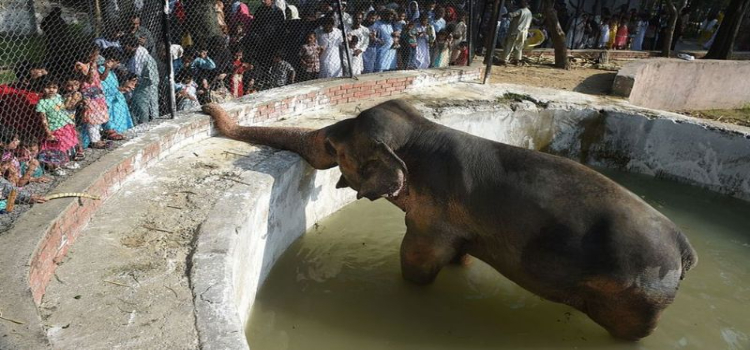Two white tiger cubs at Lahore zoo are said to have been killed after suffering from novel COVID-19 coronavirus.
According to officials at Lahore zoo, two 11-week old white tiger cubs appear to have died due to COVID-19 coronavirus.
The tiger cubs were being treated for panleukopenia virus for the past four days. However, autopsy report has revealed that their lungs had suffered significant damage, indicating that the cubs were suffering from COVID-19.
Kiran Saleem – Lahore zoo’s deputy director, has confirmed that the tiger cubs succumbed to COVID-19.
A total of six zoo officials had tested positive for the novel virus, including the handler who was in frequent contact with the tiger cubs.
Zufishan Anushay – founder JFK animal rescue and shelter, has reprimanded zoo officials and authorities stating that white tigers are extremely rare.
She blamed negligence on zoo officials’ end by keeping these animals in unhygienic conditions and their failure to ensure the provision of essential medical services as the prime causes of tiger cubs’ death.
Pakistan has witnessed notable incidents of ‘criminal negligence’ regarding zoo animals being subjected to poor treatment in captivity.
Pakistan’s ‘Disturbing’ History of Animal Maltreatment
IHC directed two Himalayan Brown Bears namely Suzie and Bubloo, of Islamabad zoo to be shifted to Al Ma’wa sanctuary for Nature and Wildlife in Jordan in December 2020 last year.
Kaavan was a 36-year old elephant that was transferred to Cambodia after being subjected to severely poor living conditions in Pakistan.
Kaavan was gifted to Pakistan from Sri Lanka back in 1985. In Sri Lanka he was kept at Pinnawala Elephant Orphanage (PEO) and was ‘gifted’ to Pakistan during General Zia ul Haq’s regime.
As per details, Zain Zia – daughter of General Zia ul Haq, had wished for an elephant after watching a Bollywood move, and it was at her father’s behest that Kaavan arrived in Pakistan.
In Pakistan, Kaavan was subjected to severe neglect and was subjected to deplorable conditions, especially after his companion ‘Saheli’ – an elephant brought in from Bangladesh, died in 2012.
Since the death of his only companion Saheli, Kaavan suffered from continued stress due to loneliness – elephants are highly social animals and require stable social interaction with their own kind.
According to experts, Kaavan’s continuous ‘head bobbing’ was a sign of distress and other possible mental illnesses that he was suffering from.
He spent extensive part of his life in chains and was used as an ‘entertainer’ for the public that visited the zoo.

Kaavan was directed by his mahout/handler to raise his trunk as a ‘begging bowl’ to collect the money that public gave him.
Meanwhile, the 36-year old mammal suffered from lack of basic veterinary services and was only provisioned with a small half-acre enclosure with concrete floors, narrow walls and a make-shift roof.
In Cambodia, Kaavan is spending the rest of his days 10,000-hectare (25,000-acre) Cambodian wildlife sanctuary that already caters for 80 elephants.
The sanctuary provisions all essential material, medical and other facilities required by the largest walking mammal on the planet.
With much needed care, affection and company of his own kind, hopefully Kaavan will finally be able to live a much deserved healthy life in Cambodia.

















































